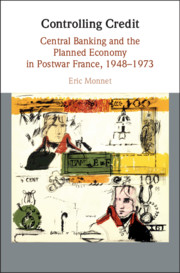Bibliography
Published online by Cambridge University Press: 29 October 2018
- Type
- Chapter
- Information
- Controlling CreditCentral Banking and the Planned Economy in Postwar France, 1948–1973, pp. 297 - 322Publisher: Cambridge University PressPrint publication year: 2018



